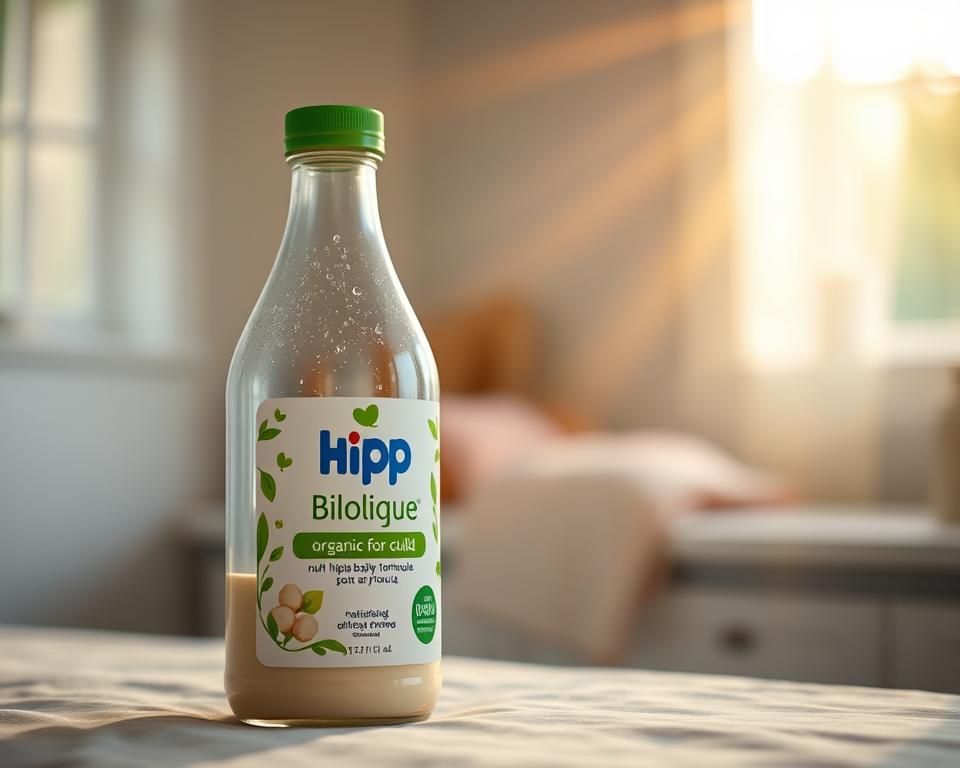The Essential Guide to FTTH cable Production Line
Allow us to present the essential guide to the FTTH cable production line. Within this comprehensive article, we will examine fiber optic cables and their indispensable role in allowing high-speed data transmission. The continuous growth in demand for faster and more reliable internet connectivity makes it essential to understand the details of FTTH cable production. You will gain valuable insights into the production of SZ stranding line through this guide, which ranges from the basics of cable infrastructure to the sequential manufacturing process.
This guide caters to both those who are new to the industry and those who wish to better their knowledge. This guide will delve into the essential components of FTTH cable systems, the function of optical fibers in FTTH technology, and how raw materials are turned into top-quality fiber optic cables. In addition, we will discuss the design considerations, stranding techniques, buffering and jacketing processes, and the efficient operation of the FTTH cable production line.
Stay tuned for the advanced technologies transforming FTTH cable manufacturing, as well as the importance of testing and quality assurance in ensuring the reliability and durability of fiber optic cables. This guide will also cover the concluding phases of packaging and distribution, ensuring the FTTH cable production line operates without interruption from start to finish.
Summary of Key Points:
- FTTH cable production line plays a vital role in providing high-speed data transmission.
- The fundamentals of FTTH cable infrastructure and its key components are crucial to understand.
- The step-by-step production of FTTH cable, starting with silica and resulting in fiber, includes fiber drawing, coating application, and testing.
- Designing configurations and layouts that meet specific network requirements can optimize performance.
- Fiber benefits from the added support and protection offered by stranding techniques and central strength members.
Understanding FTTH cable Production Basics
In order to understand the process of FTTH cable production, it is essential to have a clear understanding of the cable infrastructure, key components, and the role of optical fibers in FTTH technology.
An Overview of the FTTH cable Infrastructure
The FTTH cable infrastructure is the system of cables, connectors, and distribution points that makes data transmission possible in fiber-to-the-home (FTTH) systems. The backbone of high-speed internet connectivity is formed by this infrastructure, which allows for seamless data transfer between the provider’s network and the end user’s location.

Essential Elements of FTTH cable Systems
The smooth and efficient transmission of data in FTTH cable systems is made possible by the interaction of several key components. These components include:
- Fiber optic cables: These cables are responsible for carrying the data signals in the form of light. With a design that provides high bandwidth and minimizes signal loss, they ensure fast and reliable data transmission.
- Connectors: Connectors play a crucial role in joining fiber optic cables to other cables or devices, facilitating the connection and disconnection of cables when necessary. A secure and reliable connection is provided by them, which helps minimize signal loss.
- Distribution points: Distribution points are used to divide and distribute the fiber optic signals to multiple end users. They play a role in making sure every user gets the right amount of bandwidth while keeping the overall network performance intact.
The Role of Optical Fibers in FTTH Technology
Optical fibers are the key component of FTTH technology. Made of thin strands of glass or plastic, they are designed to efficiently transmit data signals in the form of light pulses. High-speed data transmission is ideally suited to optical fibers due to their high bandwidth capacity, low signal loss, and immunity to electromagnetic interference.
These fibers consist of a core that transmits light signals, and this core is surrounded by a cladding layer that reflects the light back in, preventing signal loss. This design enables optical fibers to carry data over long distances without the signal quality or speed getting worse.
A Detailed Look at FTTH cable Production: From Silica to Fiber
Fiber Drawing: Crafting the Core
To start the FTTH cable production process, fiber drawing is performed to craft the core of the cable. Pulling and stretching a glass preform made of silica is how this process creates a long, thin fiber. The diameter of the fiber is precisely controlled during fiber drawing to guarantee optimal performance. A crucial factor in the cable’s efficient and accurate data transmission is the quality and composition of its core.
The Importance of Coating Application in cable Durability
Following the fiber drawing process, coating application is the subsequent step. In this stage, a protective layer, known as a coating, is applied to the fiber. As a buffer against external factors such as moisture, the coating serves several purposes, including improving the fiber’s long-term durability and reliability. Additionally, the coating material used is carefully selected to have the appropriate mechanical properties, ensuring that the fiber remains intact and protected throughout its lifespan.
Testing for Quality: Fiber Testing in the Production Process
The quality and performance of the fiber are verified through fiber testing, which is done at different stages of the FTTH cable production process. Measurements of the fiber’s physical parameters, such as diameter, attenuation, and tensile strength, are taken during testing, along with inspections of the coating’s uniformity and adhesion. Ensuring that the fiber meets the required standards and specifications is crucial, and these tests help guarantee the overall quality and performance of the final FTTH cables.
| Stage of Production | Testing Parameters |
|---|---|
| Fiber Drawing | Diameter, Attenuation, Tensile Strength |
| Coating Application | Coating Thickness, Uniformity, Adhesion |
Table: Testing Parameters at Different Stages of FTTH cable Production
The testing parameters measured at different stages of the FTTH cable production process are summarized in the table above. Manufacturers can ensure that every fiber used in the cables meets the necessary quality standards by performing thorough testing, which ultimately leads to the high-performance and reliability of FTTH cable systems.
Design Considerations for FTTH cable Configurations
For fiber-to-the-home (FTTH) cable production, designing cable configurations is essential for meeting network requirements and getting the best possible performance. cable design involves considering factors such as network capacity, scalability, and the desired speed of data transmission. Efficient deployment and maximized capabilities of their network infrastructure are achieved by companies that tailor cable configurations to their specific needs.
FTTH cables offer a range of configurations and layouts, and each option comes with its own set of benefits and considerations:
- In a Daisy Chain Configuration, subscribers are connected in a line to the main distribution point. This cost-effective solution is ideal for regions with a low number of subscribers.
- In the star configuration, the central office or hub is directly connected to each subscriber. Because of its flexibility and easy maintenance, this design is perfect for areas where many people live close together.
- Subscribers are connected in a circle in the ring configuration. It provides backup systems and can keep working even if there are problems, ensuring service continues if the network fails.
- The main distribution point connects to secondary distribution points, and from there, individual subscribers are connected in a tree configuration. This configuration allows the network to grow easily and is often used in areas where there are a lot of subscribers.
- Distribution points have multiple connections between them in the mesh configuration, which provides high reliability and redundancy. Applications where uninterrupted service is absolutely necessary often use this configuration.
When you’re designing FTTH cable configurations, you need to take into account what the network needs and how much it’s likely to grow. The best configuration to choose depends on things like how many subscribers there are, where they are located, and what kind of service they need, as each configuration has its own advantages and disadvantages.
Careful evaluation of these factors, along with collaboration with industry experts, enables companies to design FTTH cable configurations that are specifically suited to their network requirements and provide optimal performance.
Methods and Tools for Stranding
To ensure the strength and durability of FTTH cables, stranding techniques and equipment play a vital role in their production. Different stranding patterns are employed, each with its own advantages and applications. Selecting the correct stranding machinery is crucial for producing cables efficiently and to a high standard. Additionally, central strength members provide additional support and protection for the fiber, contributing to the overall reliability of the FTTH cables.
Various Stranding Patterns Explained
A key element in FTTH cable production is deciding on the best stranding pattern. Depending on what characteristics are desired in the cable, different stranding patterns are used, such as reverse concentric, SZ stranding, and helical stranding. The cable’s performance in terms of flexibility, strength, and resistance to external factors can be enhanced by the unique features offered by each pattern. Stranding patterns are carefully chosen to meet specific application requirements, ensuring optimal performance and longevity of the FTTH cables.
Factors to Consider When Choosing Stranding Machinery
Stranding machinery is an integral part of the FTTH cable production line. It enables the precise formation of the stranding pattern while maintaining the required tension and alignment of the fibers. The diameter of the cable, how fast you need to produce it, and how much automation you want are all factors that will help you choose the right fiber draw tower machinery. Because advanced stranding machines are more efficient and flexible, manufacturers can produce a large number of cables and also offer customization.
Role of Central Strength Members
Using central strength members in FTTH cables helps to improve their mechanical properties. They offer stability, enhance how much the cable can be stretched without breaking, and protect the delicate fiber inside. Made from materials such as aramid or fiberglass, central strength members act like a spine, making the cable structure stronger and helping it resist external forces. FTTH cables are able to withstand the stresses of installation and maintain the quality of signal transmission thanks to them, which makes them suitable for different deployment scenarios.
Buffering and Jacketing: Protecting the Fiber
The protection of the delicate fiber within FTTH cables relies heavily on the buffering and jacketing processes during production. These processes ensure that the fiber is shielded from an array of potential threats, including moisture, abrasion, and other external factors that could jeopardize its performance and longevity.
Understanding the Buffering Process
A protective layer is applied around the fiber during the buffering process, which acts as a barrier against things in the environment. This layer prevents water penetration, which can cause signal loss or even breakage of the fiber. Additionally, buffering enhances the cable’s resistance to abrasion, reducing the risk of damage during installation or maintenance.
For the fiber to experience minimal stress, the buffering materials used need to stick to the fiber very well and have a low coefficient of friction. Factors such as the environmental conditions the cable will face and how much protection is desired will determine which buffering material is best to use.
Selecting Materials for Effective Jacketing
The process of putting an outer layer on to further protect the fiber and the buffering materials is known as jacketing. To offer robust protection from mechanical stress, impact, UV radiation, and other potential hazards, the jacketing material is carefully chosen.
The flexibility of the material, how well it resists flames, and whether it can withstand the environmental conditions are all factors considered when selecting jacketing materials. Common materials used for jacketing include polyethylene (PE), polyvinyl chloride (PVC), and low-smoke zero-halogen (LSZH) compounds. Depending on the specific application and what the industry standards require, a material will be chosen, as each has its own advantages and disadvantages.
Using the Newest Technologies for Jacketing
The advancements in jacketing technologies have revolutionized the protection of FTTH cables. With the newest technologies, you get better strength, more flexibility, and better resistance to things in the environment, which means they last longer and are more reliable.
An example of an innovative jacketing technology is tight-buffered cables, where each fiber has its own thin plastic buffer, offering excellent protection and flexibility. Micro-ducts are another technology, and they use strong tubes to hold multiple fibers, which allows for high density and makes cable installation versatile.
Besides these, there are also specialized jacketing technologies that are designed to meet the particular requirements of different industries. For instance, cables used in harsh outdoor environments might incorporate armored jackets, providing superior protection against rodents, moisture, and extreme temperatures.
FTTH cables can be tailored to meet the needs of different applications by using the latest jacketing technologies, which guarantees the best performance, a long lifespan, and reliability.
The Workings of the FTTH cable Production Line
The FTTH cable production line relies on efficient operations to ensure a smooth and streamlined manufacturing process. Every step in the production line is vital for creating high-quality fiber optic cables that make high-speed internet connectivity possible. Optimal efficiency is reached by using a variety of machinery and equipment.
Preparation of raw materials, including the silica for fiber drawing, is the initial stage of the manufacturing process. Next, the fiber drawing process begins, and this is where the cable’s core is carefully made to meet the required specifications. Coating application follows, ensuring durability and protection for the fiber.
Ensuring the cables meet the highest standards is the top priority, so rigorous fiber testing is performed at every stage of the production line. This involves testing things like how much the signal weakens, how much data it can carry, and how much signal is lost.
Efficiency is a key factor in the operations of the FTTH cable production line. By optimizing the use of machinery and equipment, manufacturers can minimize production time and costs while maximizing output. Additionally, efficient processes contribute to the overall quality of the cables.
There are many different stages and parts involved in the manufacturing process, which can make it complex. However, by using efficient operations and always trying to find ways to make things better, manufacturers can improve the efficiency and effectiveness of their FTTH cable production line.
To provide a holistic understanding of the FTTH cable production line operations, the following table provides a summary of key machinery and their roles in the manufacturing process:
| Machine | Role |
|---|---|
| Fiber Drawing Machine | Produces the fiber optic cable core by pulling and stretching the silica material. |
| Coating Machine | Applies a protective coating to the fiber optic cable, ensuring durability and resistance to external factors. |
| Fiber Testing Equipment | Conducts various tests on the fiber optic cable to ensure quality and performance. |
| Spooling Machine | Winds the finished fiber optic cable onto spools for packaging and distribution. |
| Jacketing Machine | Applies an outer jacket to the fiber optic cable, providing additional protection and improving its handling. |
Using advanced machinery and technologies allows manufacturers to make their production line operations more streamlined, improve efficiency, and deliver high-quality FTTH cables that meet the rising demand for high-speed internet connectivity.
Latest Technologies Used in FTTH cable Manufacturing
For the FTTH (Fiber to the Home) cable manufacturing field, which is always evolving, advanced technologies are key to improving efficiency and quality. Automation, AI integration, and fiber coloring machines have completely changed the production process due to the increasing demand for high-speed data transmission, which has driven innovation and led to the creation of superior products.
Automation in Fiber Optic cable Production
The automation of fiber optic cable production has significantly transformed the manufacturing landscape. Using advanced machines and robots allows for very accurate control of the manufacturing process, which ensures consistent quality and reduces the chance of mistakes. Because of this automation, more cables can be produced faster and with better accuracy, which ultimately saves money and makes customers happier.
How AI is Integrated for Quality Control
By integrating artificial intelligence (AI) into the quality control process, FTTH cable manufacturers can achieve unprecedented levels of accuracy and reliability. Algorithms powered by AI can analyze production data as it’s being generated, identifying any variations or problems that might impact the quality of the cables. This way of checking quality helps to reduce mistakes, make production more efficient, and ensure that only the best FTTH cables are sold.
How Fiber Coloring Machines Work
Fiber coloring machines have completely changed how FTTH cables are made by providing more options for customization. With fiber coloring machines, optical fiber strands can be color-coded, which makes it easy to identify them and manage the cables efficiently during installation and maintenance. The need for manual color coding is eliminated by this technology, which also reduces the risk of errors and makes cable deployment more efficient overall.
The Role of Testing and Quality Assurance in Fiber Optics
It’s of the utmost importance to ensure the highest quality in the field of fiber optics. To make sure this happens, strict testing and quality assurance procedures are followed during the entire production process. The reliability and consistency of fiber optic cables are guaranteed by standardized testing protocols, which play a crucial role.
How Standardized Testing Protocols are Implemented
Every fiber optic cable is guaranteed to meet the required quality standards through the establishment of standardized testing protocols. These protocols outline specific testing procedures and criteria that must be followed during each stage of the production process. Manufacturers can find and fix any problems by following these protocols, which ensures that customers only receive the best quality cables.
The Importance of OTDR in Ensuring Quality
Performing quality checks on fiber optic cables relies heavily on the use of Optical Time-Domain Reflectometer (OTDR). OTDR is a testing instrument that utilizes light pulses to measure the loss and reflectance along the length of an optical fiber. By analyzing the OTDR traces, technicians can detect issues such as fiber bending, signal loss, or connector damage. This enables them to pinpoint the exact location of any faults and take corrective actions, ensuring the overall quality and performance of the cable.
Steps to Maintain Rigorous Quality Assurance Standards
To ensure fiber optic cables perform consistently and reliably, quality assurance standards are maintained throughout the entire production process. These standards cover various aspects, including material selection, manufacturing processes, and final product testing. Manufacturers can guarantee that their products meet the highest quality and performance levels required by the industry by following these strict standards.
Packaging and Distribution: The Final Steps in FTTH cable Production
In this section, we will look at the final stages of Fiber coloring machine production, including how they are packaged and distributed. It’s crucial to ensure that the cables are packaged correctly and efficiently after they have been through all the different manufacturing processes, as this helps with their deployment and installation in the field. Protective packaging solutions are also key to making sure the delicate fiber optic cables are safe during transportation and storage. Efficient logistics and supply chain management are essential to ensuring that FTTH products are delivered to customers in a timely manner, meeting their connectivity needs effectively.
Efficient cable Spooling Techniques
Smooth and convenient installation of FTTH cables depends on using efficient cable spooling techniques. cable spools provide a practical and organized way to store and transport the cables, reducing the risk of tangling or damage. By employing optimized cable spooling techniques, cable installers can save time and effort during the deployment process. The overall look of the installation is also enhanced by properly spooled cables, which ensures a neat and professional appearance.
Packaging Solutions for Safeguarding Fiber Optic cables
To protect the delicate fiber optic cables during transportation and storage, it is essential to implement effective protective packaging solutions. These solutions should provide cushioning, shock absorption, and resistance to external factors such as moisture, dust, and physical impact. The use of high-quality packaging materials and techniques ensures that the fiber optic cables will arrive at their destination in optimal condition, ready to be installed by manufacturers. This not only keeps the cables in good condition but also makes customers happier by reducing the chance of damage or the cables not working as well as they should.
Best Practices for FTTH Product Logistics and Supply Chain
It’s very important to have efficient logistics and supply chain management to successfully deliver FTTH products to customers. This includes making careful plans for how the cables will be transported, stored, and distributed to ensure they arrive when they should and are reliable. Managing the supply chain effectively helps minimize delays and optimize the flow of products, reducing costs and improving customer service..
Summary
To summarize, the ultimate guide to the FTTH cable production line has provided a complete picture of the process involved in manufacturing fiber optic cables for high-speed internet connectivity. We have stressed the importance of the FTTH cable production line in making fast and reliable data transmission a reality throughout this article.
Playing a critical role in high-speed internet connectivity, fiber optic cables allow for seamless communication, streaming, and online activities. This process, which goes step by step from fiber drawing to buffering and jacketing, ensures that FTTH cables are durable and of high quality.
Automation and AI integration are examples of advanced technologies that have completely changed the manufacturing process, making it more efficient and accurate. Standardized testing protocols and strict quality assurance standards also play a role in guaranteeing the reliability and performance of fiber optics.
FTTH cable production ends with packaging and distribution, which ensures these essential cables are deployed efficiently and kept safe during transportation. It takes expertise and precision in the FTTH cable production line to meet the world’s growing need for high-speed internet connectivity.









